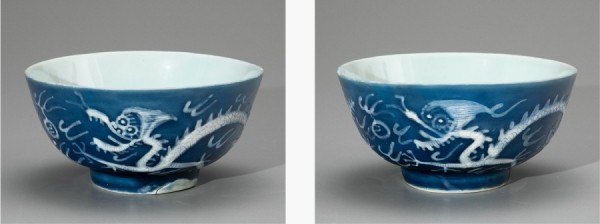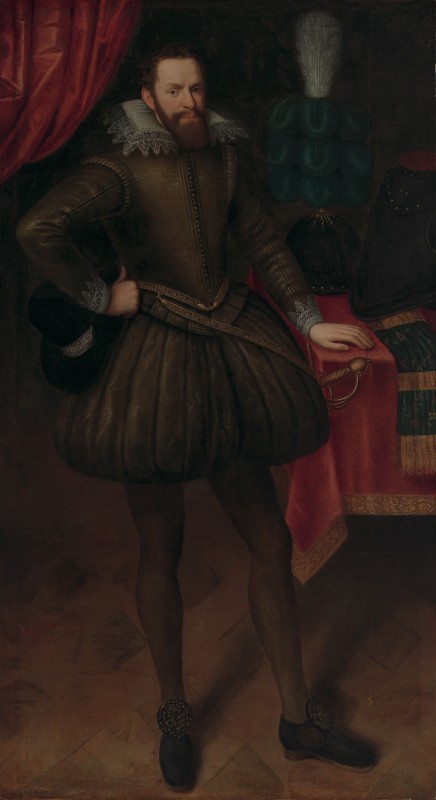
Bowl, Jingdezhen, China, ca. 1572–1620. Slip-decorated porcelain. D. of footring 2". (Courtesy, Jamestown Rediscovery Foundation; photo, Robert Hunter.) This fragmentary example was recovered from disturbed archaeological deposits at James Fort.

Bowl, Jingdezhen, China, ca. 1572–1620. Slip-decorated porcelain. H. 2 3/8". (Private collection; photos, Robert Hunter.) This bowl was recovered as an archaeological find in Bantam, Java, and restored.

The archaic mark on the top bowl, recovered in Bantam (and illustrated in fig. 2) is the same as that on the bottom bowl, recovered from Jamestown (and illustrated in fig. 1). (Courtesy, Jamestown Rediscovery Foundation; photo, Robert Hunter.)

Johann Theodor de Bry (1560–1623) and Johann Israel de Bry (1565–1609), Part III, Bird’s-eye View of the City of Bantam. From Orientalische Indien [Little Voyages], Dritter Theil indiae orientalis (Frankfurt, 1599). Colored engraving on paper. 9 7/8 x 6 1/8" (image). (Wikimedia Commons.)

Unidentified engraver, View of Bantam Market, Cornelis Claesz (publisher), Amsterdam, ca. 1598. Engraving on paper. 7 3/4 x 21 1/2". (Koninklijke Bibliotheek, The Hague.)

Unidentified artist, Captain Robert Adams, England, 1626. Oil on canvas. 43 1/4 x 35 1/2". (Courtesy, Virginia Museum of Fine Arts, Gift of Hugh W. Long, 48.4.1.)

Marcus Gheeraerts the Younger (ca. 1561/62–1636), Sir Thomas Dale, ca. 1609–1619. Oil on canvas. 80 1/4 x 45 1/4". (Courtesy, Virginia Museum of Fine Arts, Adolph D. and Wilkins C. Williams Fund, 52.8.)
